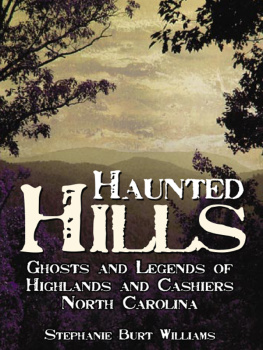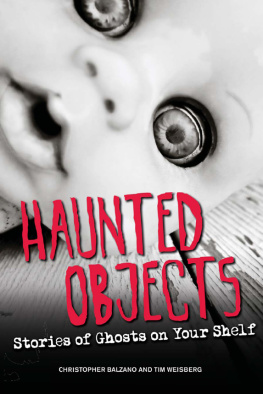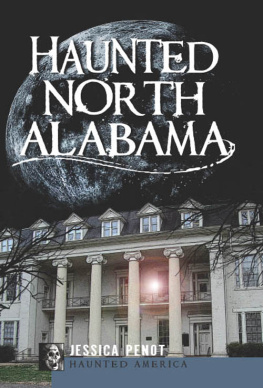
CONTENTS
T HERE can be no better guide to this ghostly realm than the deeply knowledgeable and widely experienced Michael Williams. A man of complete integrity, deep understanding and rare wisdom, it is always good to see him.
I love Cornwall and have been visiting the area for more years than I care to remember. Certainly we took the children there when they were young and impressionable and today, as old-age pensioners, they still remember those magic days of long ago. For a good many years now I have been visiting this jewel of the West Country twice a year and my visits are enriched, enhanced and brightened by Michael and his delightful wife Sonia.
On one visit we explored The Castle at Bude with its singular atmosphere and it is good that this interesting treasure of Cornwall is researched and investigated in this volume by Michael and his excellent Paranormal Investigation group. The Castle is just one of the many places in Cornwall that Michael and I have visited, and I am never disappointed when he takes me to some deserted airfield or battlefield or ancient place of unusual interest. In this volume not only are we treated to visiting haunted places but we invariably learn something of the history of the place and we appreciate some of the mystery and fascination of the unknown, for Michael is a much respected Cornish bard, an author and writer of considerable experience and an accepted authority on Cornwall.
This is a valuable volume that will accompany me on future visits to my favourite county. Michael and I share the same interests, and having talked, officiated, investigated and broadcast together, I hope the future holds new exciting explorations, missions and achievements and causes yet to be conquered. And as history lengthens like a shadow behind us, anyone can enjoy some of the secret wonders of Cornwall with this volume in their hands.
We are indebted to Michael Williams for exploring, explaining and writing entertainingly about the ghosts of North Cornwall, a place where you never know when you may encounter a ghost or ghostly activity, and this book will help you to know the best places to frequent or to avoid!
Peter Underwood, 2014
I am deeply grateful to Peter Underwood for writing his generous foreword. Once more I owe so much to my wife, Sonia, and Elaine Beckton, two invaluable allies on this and many other projects. Elaine and the Paranormal Investigation team have given insights into paranormal exploration, especially mediumship, throughout this volume. I am also very grateful to Zena ORourke, editor of The Cornish Guardian , who allows me to write on the paranormal from time to time. Stephen Cleaves, a member of the paranormal group, has contributed a rich harvest of photographs, and David Flower, in his busy life as a press photographer, has found time to take three photographs. Appreciation to Declan Flynn and Lucy Simpkin for their help and encouragement at The History Press, and also to Luke Thompson for reading the proofs. I am touched too by the generosity of the Q Memorial Fund Qs Mystery Stories (1937) is here in my St Teath library. And my thanks to all the people who have loaned illustrations. Last but not least, I am indebted to those who have given interviews revealing insider knowledge and, of course, the ghosts themselves.
All photographs and illustrations, unless otherwise indicated, are attributed to and remain copyright of the author.
M ICHAEL Williams is a Cornishman and Cornish bard. He and his wife Sonia founded Bossiney Books and were regional publishers for twenty-five years. They live near St Teath, North Cornwall. Michael has written and broadcast on the paranormal for many years. His recent authorship includes Writers in Cornwall and The Three du Maurier Sisters . He is the president of Paranormal Investigation, a group exploring the edge of the unknown in the South West, and he is currently writing and researching conversations with eminent Cornish personalities.
Michael was founder of the Cornish Crusaders Cricket Club, which he ran for over half a century. He continues to support and encourage young cricketers in Cornwall. He is a patron of the Broomfield Horse Sanctuary near St Just in Penwith, is a member of World Horse Welfare and patron of Animals Voice, and campaigns nationally on animal welfare issues.

Author Michael Williams exploring the haunted coastline of Tintagel Trevena on old maps. He is convinced that the high percentage of phantoms in the area is due to the powerful atmosphere and the fact that so much history has taken place hereabouts. (Photograph courtesy of David Flower)
N ORTH Cornwall and the paranormal come together naturally. I have been a ghost hunter for over forty years and have experienced more of the unknown in this area than anywhere else in the South West. It is quite simply one of the most haunted areas in all of Britain, outside London.
To the north is Morwenstow, with its contrasting territory of deep wooded coombe and beautiful but terrifying cliffs. It is the first or last bit of Cornwall before Welcombe. Here, reflected the Poet Laureate Sir John Betjeman, one is reaching not only the end of Cornwall but it seems the end of the world. Morwenstow is also known as Hawker Country, and of all the parsons parading through Cornish history, Robert Stephen Hawker is the most famous.
Hawker was the vicar here for forty-one years. He died in 1875, an earthly end coloured in controversy. Though he is buried in Plymouth, some say he has never left North Cornwall.
He lived in an era before the motor car and travelled by horse or pony, riding or driving a cart. He dearly loved a pony called Carrow and they covered hundreds of miles around this border territory. On one occasion, as the pair of them journeyed from Welcombe back to Morwenstow Rectory, the great man recalled: As I entered the Gulph between the Vallies today, a storm leaped from the Sea, and rushed at me roaring I recognised a Demon and put Carrow into a gallop and so escaped. He never forgot his encounter with the demon and thereafter sang hymns whenever he rode through these valleys and sang them loudly.
Over the centuries, layer upon layer of mystery has grown up, on and around parts of this coastline and countryside. Many of us think some events can leave an atmosphere, which the subconscious can play back like a piece of old film. The diversity of the North Cornwall phantoms is remarkable: human footsteps; horses hoofbeats; the old butler ascending an original staircase at a different level from todays; the kitchen corridor haunted by the smell of frying onions; the ghost train which is always on time; the grey van in a narrow lane near Helston, there one moment and gone the next; and the ghostly black dog seen near Tintagel, all make for a curious catalogue, of which these are only some examples.

Why is North Cornwall considered such haunted territory? There are various reasons: one is that ghosts often manifest near granite, and this terrain has more than its share of granite.
I cannot make this journey across North Cornwall without saluting Colin Wilson, one of the greatest paranormal writers in literary history and who happens to have resided in Cornwall. until his death in December 2013. Conversations with him and reading his books there are about twenty of them in my St Teath library have shaped a deepening awareness.
Next page


















